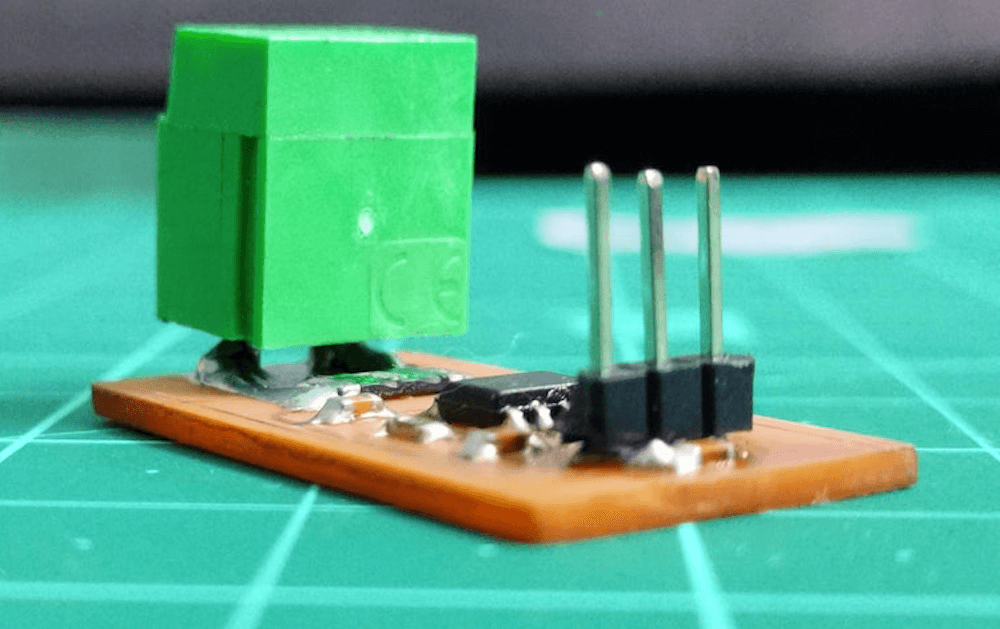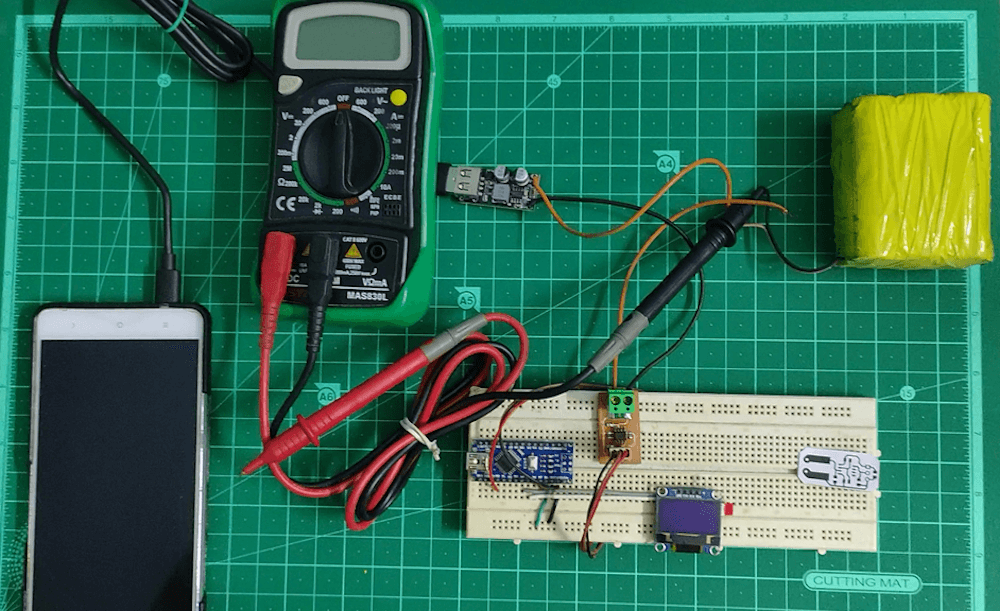
When working with electronics, voltage is fairly easy to measure, but current often takes a bit more finesse. For this purpose, Utsav Shah decided to create his own current sensor capable of handling up to 15A.
The DIY device uses a shunt resistor, a voltage divider, and an LM358 op-amp to produce a voltage that corresponds to the current value. An Arduino Nano reads this voltage, calculates the current via a calibration factor, and shows it on an OLED screen for feedback.

The video below goes over the board’s design, and how it was constructed using an etched PCB method. It’s evaluated at the end of the clip with a multimeter, which corresponds nicely to what’s on display with the Nano/op-amp setup.
No comments:
Post a Comment